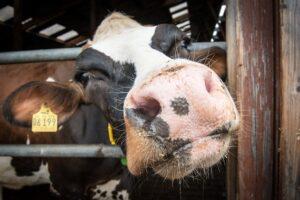A model for the efficient operation of dairy farms was created at SZTE
The agricultural science and IT researchers of the University of Szeged (SZTE) created a simulation model that helps optimize the profitability of dairy farms. Thanks to the solution, breeders can receive support for their culling decisions – the public relations directorate of the higher education institution informed MTI.

(Photo: Pixabay)
According to the summary of the publication published in the prestigious magazine Animals, one of the most important decisions in dairy cattle breeding today is the correct choice of the time to cull the cows. When deciding on slaughter, the farmer has to take into account many factors, the complexity of which makes decision-making difficult, which is often influenced by emotional aspects. One of the decisive factors is the development of reproduction indicators. The first author of the article, Violetta Tóth, a doctoral student at the SZTE Faculty of Agriculture, examines the reasons for culling in a large-scale dairy farm in her dissertation. The authors of the publication – two researchers from SZTE working in agricultural sciences and three in the field of IT – have developed a microsimulation method using twenty years of data from six large Hungarian cattle farms, which can be used to easily examine the effect of the increase in pregnancy rates and the timing of the culling decision. on profitability.
With their method, it is possible to determine with high precision the effect of the increase in the pregnancy rate and the number of culling days on the economic indicators of individual dairy farms
The purpose of the procedure is to help management decisions in order to achieve better profitability and economic efficiency. The results showed that by increasing the pregnancy rate, the length of the calving interval can be successfully reduced, but the improved pregnancy rate does not bring a significant increase in milk production, but it provides a better opportunity for selection. In order to obtain useful results for the farms, the researchers intend to further develop the model in the future, adapting it to the farms and taking into account their characteristics.
MTI
Related news
AM: Government helps farmers with a loan moratorium
🎧 Hallgasd a cikket: Lejátszás Szünet Folytatás Leállítás Nyelv: Auto…
Read more >More than 100 Hungarian farmers also demonstrated in Brussels
🎧 Hallgasd a cikket: Lejátszás Szünet Folytatás Leállítás Nyelv: Auto…
Read more >NAK: Domestic producers await customers with an ample supply of all pine species
🎧 Hallgasd a cikket: Lejátszás Szünet Folytatás Leállítás Nyelv: Auto…
Read more >Related news
NGM: The minimum wage will increase by 11 percent in 2026, and the guaranteed minimum wage by 7 percent
🎧 Hallgasd a cikket: Lejátszás Szünet Folytatás Leállítás Nyelv: Auto…
Read more >The first Hungarian IT teacher would be 110 years old on January 2: Mihály Kovács taught computer science before PCs
🎧 Hallgasd a cikket: Lejátszás Szünet Folytatás Leállítás Nyelv: Auto…
Read more >New Year’s Eve: shortened opening hours in stores – general store closure on January 1
🎧 Hallgasd a cikket: Lejátszás Szünet Folytatás Leállítás Nyelv: Auto…
Read more >






